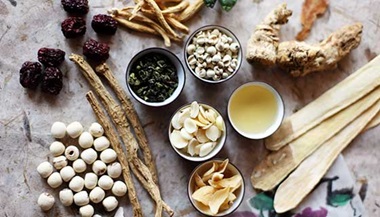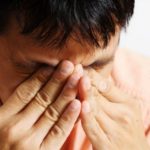
Pimples Homeopathic Medication
A pimple is a small pustule or papule. Pimples develop when sebaceous glands, or oil glands, become clogged and infected, leading to swollen, red lesions filled with pus.
Also known as spots or zits, pimples are a part of acne. They are most likely to occur around puberty but can happen at any age.
During puberty, hormone production changes. This can cause the sebaceous glands at the base of hair follicles to become overactive. As a result, for women, pimples are most likely to occur during the teenage years and around menstruation.
Pimples most often affect the face, back, chest, and shoulders. This is because there are many sebaceous glands in these areas of skin.
Acne vulgaris, the leading cause of pimples, affects over 80 percent of teenagers. After 25 years, it affects 3 percent of trusted Sources of men and 12 percent of women.
Fast facts on pimples
Here are some key points about pimples. More detail is in the main article.
Pimples range in severity from blackheads to cysts.
They happen when the sebaceous glands become more active, dead skin cells clog the pores, and sometimes an infection develops.
Pimples often occur in adolescence, but they can affect people at any age.
There is not enough evidence to confirm that any food causes acne, but following a healthy diet may reduce the risk.
Types
Blackheads, whiteheads, and cysts are all kinds of pimples, but what makes them break out?
There are several different types of pimples, and they have other signs and symptoms:
Whiteheads: Also known as a closed comedo, small pimples remain under the skin. They appear as small, flesh-coloured papules.
Blackheads: Also known as an open comedo. These are visible on the surface of the skin. They are black or dark brown due to the oxidation of melanin, the skin’s pigment.
Some people mistakenly believe they are caused by dirt because of their colour and scrub their faces vigorously. Scrubbing does not help. It may irritate the skin and cause other problems.
Papules are small, solid, rounded bumps that rise from the skin. They are often pink.
Pustules: These are pimples full of pus. They are clearly visible on the surface of the skin. The base is red, and the pus is on the top.
Nodules: These have a similar structure to papules but are larger. They can be painful and are embedded deep in the skin.
Cysts: These are clearly visible on the surface of the skin. They are filled with pus and are usually painful. Cysts commonly cause scars.
Causes
Pimples happen when pores become clogged with sebum and dead skin. Sometimes this leads to infection and inflammation. Why they affect some people more than others is largely unknown.
The sebaceous glands and pimples
The sebaceous glands are tiny skin glands that secrete sebum, a waxy or oily substance that lubricates the skin and hair.
Sebaceous glands are found inside the pores of our skin. These are found all over the body except the palms of the hands and soles of the feet. There are more sebaceous glands on the face and scalp than elsewhere.
As the glands produce sebum inside the pores, new skin cells are constantly growing, and the outer layers of skin are being shed.
Sometimes, dead skin cells are not shed. Instead, they remain in the pores and get stuck together by the sticky sebum, causing a blockage in the pore.
Pore blockage is more likely to occur during puberty, as the sebaceous glands produce more sebum.
Bacterial infection
Where sebum and dead skin cells accumulate and block a pore, this encourages the growth of undesirable bacteria, including Propionibacterium acnes (P. acnes), a slow-growing bacterium linked to acne.
Propionibacterium acnes exist harmlessly on our skin, but when the conditions are right, it can reproduce more rapidly and become a problem. The slow-growing bacterium feeds off the sebum and produces a substance that causes an immune response. This leads to skin inflammation and spots.
Although pimples are related to bacterial infection, they are not contagious. Therefore, one person cannot catch spots from another.
Risk factors
It is unclear exactly why some people are more prone to pimples than others. Hormone fluctuation and genetic factors may play a role, as acne often runs in families, but some other factors are possible.
Good and bad bacteria
Gentle washing may help prevent infection, but scrubbing can make pimples worse.
Just as in the gut, we have “good” bacteria that protect against disease and “bad” bacteria that cause disease. Scientists have suggested that the same may be true for the skin.
Researchers at the Washington University School of Medicine identified two unique strains of P. acnes in the skin of 20 percent of people with pimples. In contrast, those with healthy skin tended not to harbour these strains. source
Another strain of P. acnes had the opposite effect. People with pimples tended not to have this strain, but those with healthy skin did.
This may indicate that particular types of bacteria determine the severity and frequency of pimples. The researchers suggest that these bacteria may also interact with different factors, such as hormone and sebum levels. They call for more research.
Yeast infections
Acne-type breakouts have also been linked to yeast infections.
Pityrosporum, also known as Malassezia or folliculutis, happens when a pityrosporum yeast enters the hair follicles and multiplies. This triggers an itchy eruption of tiny, rounded pimples that resembles acne. It mainly occurs on the upper chest, shoulders, and upper back, but it can also affect the face.
Most people have this yeast on their skin, but if too much develops, it can cause a problem. It can happen to anyone in young to middle age.
Humid, sweaty environments, clothes made of synthetic fibres, and the use of oily skin products can all make this worse.
The condition is common in adolescents because of increased sebaceous gland activity. It is not the same as acne, but it is often confused with it.
Antibiotics usually used for acne can also make the condition worse, as they suppress the bacteria that would otherwise control the yeast. Therefore, antifungal treatment is needed in the case of malassezia.
Testosterone sensitivity
Researchers have found a link between acne pimples, higher testosterone levels, and other androgens. These “male” hormones also exist in lower levels in females.
Higher testosterone levels trigger more significant activity in the sebaceous glands, resulting in more clogged pores and a higher chance of acne.
Dietary factors
The role of diet in acne is unclear, but since a healthy, balanced diet is known to promote good health, some dietary factors may affect the likelihood of getting acne or pimples.
Don’t cut out all fats from the diet. Healthful fats from nuts, seeds, and olive oil may help control inflammation.
Vitamins A, D, and E are all known to play a role in maintaining healthy skin, so an adequate supply of these vitamins may help prevent acne.
Milk consumption has been associated with acne. If milk does play a role, this could be due to the hormones in milk. However, the findings have been inconclusive.
It has often been said that sugar and chocolate trigger acne, but research findings have not supported this.
Studies have linked to a low glycemic-index (GI) diet with lower levels of insulin in the blood, lower levels of androgen, and a reduced likelihood of acne.
However, the results are not conclusive. Moreover, advocating a low GI diet could discourage people from consuming enough whole grains and other healthful foods that could provide useful nutrients.
Although acne is related to sebum production, avoiding all fat in the diet is not advisable. Healthy polyunsaturated and monounsaturated fats are necessary for key bodily functions. A fat-free or very low-fat diet can cause the skin to dry out and prompt the body to increase sebum production.
A good intake of fats from nuts, seeds, and olive oil may help by keeping inflammation in check, supporting the body in maintaining healthy blood sugar levels, and maintaining good skin moisture levels so as to provide an effective barrier and immune response to prevent bacterial infection.
The medication has no reported side effects due to its herbal formula. Thousands of people have taken this medication to treat all allergies as well as internal tumours & with an exceptional result rate of 90%.

Pir Sahib believes the other 10% that may not have gained the expected results could be due to several factors. This includes taking other medication with this or taking it inconsistently, or not following the instructions carefully, or simply their body does not accept the medicine.
Regardless of the 10%, the success rate of the medication is far better than any other type of treatment available in the market. There is no operations or chemotherapy involved.
Until this article on Maira Sharif’s official website, none of the medications have ever been advertised or commercialised to make money. The people who benefitted from these medications spread the word to their friends and family. For the greater good of the people, it has now been decided to harness social media to spread the word to save people suffering from spending fortunes without any benefit.
The medication is very cheap compared to the procedures and medicine available. This is done deliberately to help people as the cost of making it is taken and nothing else.







